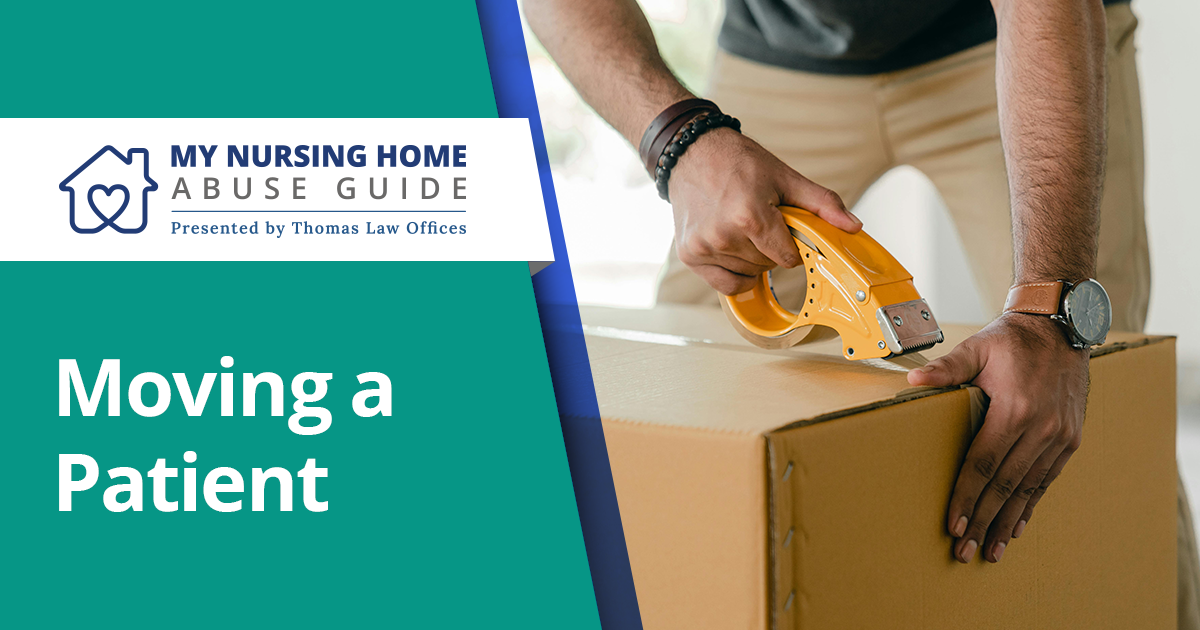Your Guide to Nursing Home Abuse & Prevention
Millions of elderly adults live in nursing home facilities.
Every one of them deserves to feel safe, protected, and respected.
Millions of elderly adults live in nursing home facilities.
Every one of them deserves to feel safe, protected, and respected.

So, you have a family member who currently resides in one nursing home, but you discovered that they’ve long been abused or neglected or given the facility’s apparent staffing shortages or inadequate training, uncleanliness, lack of security, or some other concerns, you fear that it’s only a matter time before a bad situation occurs. What do you do? However inconvenient it may sound and be, it may be high time to relocate your loved one to a different facility. Below, we’ll outline factors to take into account when considering moving a patient to a safer nursing home.
While relocations like these often occur with little advance notice, it doesn’t mean that you should just pick anywhere to move your relative to. Instead, you should follow these steps to ensure you make a wise choice that will be a good fit for your family member:
You’ve already had issues at your family member’s nursing home, and now you’re planning to move them to a new one. How do you narrow down your choices? You should create a preliminary list of facilities by:
As for the latter point, since many elderly individuals are on Medicare, using the health insurer’s Care Compare tool can be particularly helpful in finding reliable ratings for facilities. It allows you to type in a city/state combination or zip code to get overall rating information and more information about where any potential deficits lie.
Finding the right replacement nursing home to relocate your loved one to may involve you taking tours of your shortlisted facilities. When doing so, take note of the following:
Whether you call the facility by phone or visit in person and meet with its staff, asking the following questions can help you decide if the facility you’re planning to move your relative to is indeed a safer one than their last:
Asking questions like these of staff in person provides you with an opportunity to take note of the sincerity/genuineness with which the staff member is responding.
Additionally, it’s quite possible that, in visiting the facility, you may encounter talkative residents or their family members and friends, whom you can also ask questions about their experience with the facility.
If your loved one is relatively mobile or they’re not, but you have a handicap-accessible vehicle, you may be able to transport them yourself from one facility to the next with a family member’s assistance.
However, if you don’t have the right type of vehicle to transport them and they’re confined to a bed or wheelchair or utilize special equipment, reaching out to different medical transport providers, some of which offer non-emergency ambulance service, may be ideal.
When contacting these companies, being clear about the nature of the transfer and your relative’s medical needs will be critical.
Relocating your loved one takes some preparation. You’ll want to make sure the following are taken care of in the days and hours before the transfer occurs:
There are state and federal laws that protect the rights of nursing home residents, even when they’re being prepared to be relocated to a different facility. In Ohio, for example, staff at the patient’s current facility must perform “discharge planning and sufficient preparation and orientation to residents being transferred/discharged,” per the Ohio Department of Aging.
Long-term care facilities should have transfer protocols in place, which include essentially providing discharge instructions to the residents and to the place they’re headed to. That plan should detail the following regarding that individual’s departure or relocation from the facility:
As you can tell, there’s no mention of medical records and medication lists above. It may also be important to secure this information from a doctor to include with the discharge paperwork compiled by nursing home staff to give them a clearer picture of your loved one’s needs.
Nursing homes receiving transferred patients should prepare for the impending arrival by:
One key component when moving a patient to a safer nursing home is communication. This should happen at a few different stages, including:
We’re hopeful that this guide along with our other resources aids you in moving a patient to a safer nursing home as seamlessly as possible under the circumstances.
This website was created and is maintained by the legal team at Thomas Law Offices. Our attorneys are experienced in a wide variety of nursing home abuse and neglect cases and represent clients on a nationwide level. Call us or fill out the form to the right to tell us about your potential case. We will get back to you as quickly as possible.
866-351-2504